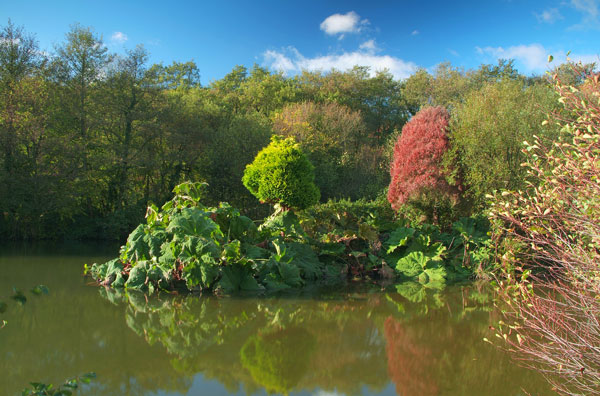

Westcott can easily occupy you for days; explore it at your leisure. The breathtaking landscape and outstanding wildlife offer the perfect photographic opportunities for even the most inexperienced photographer. Or why not set up an easel, unpack your watercolours and capture forever the beauty that surrounds you? Or just relax and enjoy the peace and quiet!
However, should you want to venture further afield, Westcott is an excellent base from which to explore North Devon, from National Trust properties and gardens to the coast and the moors. Arlington Court is only a few miles away; this Regency property was bequeathed to the National Trust by Miss Rosalie Chichester in 1949; here, between May and September, visitors can view Devon's largest colony of Lesser Horseshoe bats via the 'batcam'. Even nearer are the famous Marwood Hill Gardens which can be reached by walking the footpath from Westcott Barton. En route, why not stop at the 14th Century Marwood church and admire the sundial which shows the time in Jerusalem and the main capitals of 18th Century Europe? For the keen gardener, the RHS gardens at Rosemoor are not to be missed.
The nearby town of Barnstaple, which straddles the River Taw, is one of England's oldest boroughs and was for centuries a major port and shipyard. Vestiges of its prosperous past can be seen in the quiet backstreets. A few miles beyond the estuary are Tapeley Gardens which are rich in rare plants and offer spectacular views of rivers and hills. Also within easy reach of Westcott Barton is the small town of Braunton; here one can visit the 13th century church which has many unusual roof bosses and carved benchends. For sunny days, Woolacombe Sands and Croyde Bay offer flat yellow beaches which have Blue Flag status.
Birdwatchers, cyclists and ramblers will find many places of interest. For birdwatchers, Chapel Wood RSPB reserve is only a few miles from Westcott. Another perfect spot for ornithologists is Braunton Burrows; this designated UNESCO biosphere stretches for four miles along the north side of the Taw and Torridge estuaries. Here one can see the largest sand dune system in the UK which has a very diverse plant community. Many sea and marsh birds can be observed; this is a stopping place for migrating waders in spring and autumn, and, in winter, merlins, harriers and short-eared owls are among the birds of prey which hunt here. Along the coast to the North, one can stop off at Baggy Point, a jagged slate headland good for viewing seabirds.
A boat trip to Lundy Island is highly recommended; once there, one has time to view some of the 425 recorded bird species including puffins, razorbills and peregrine falcons. For the energetic, it is possible to walk around the whole island and still manage to catch the boat home! For the geologist, Lundy's granite and slate formations are of interest; it was from here that the granite for the Embankment in London came. Should you tire of chasing birds why not see them in captivity at the Bird of Prey Centre at the Milky Way Adventure Park in Bideford? For cyclists and walkers, the nearby Tarka Trail offers 32 miles of traffic free tracks; cycle hire is widely available. For ramblers, there are 80 miles of coast path and 700 miles of Exmoor footpaths to investigate! Other interests are well catered for in North Devon; these include golf, horse riding, surfing and angling.
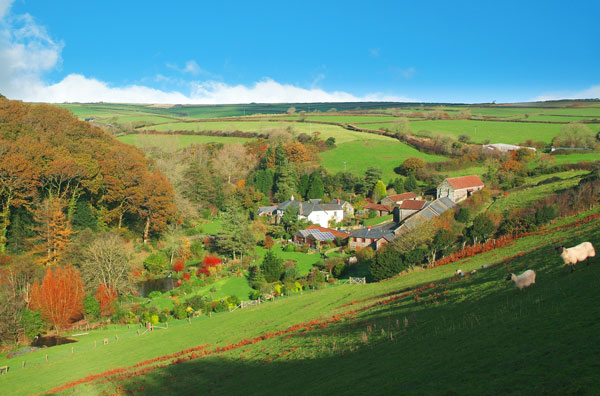
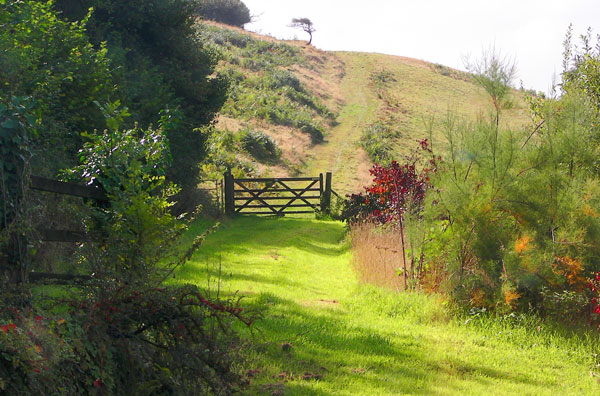
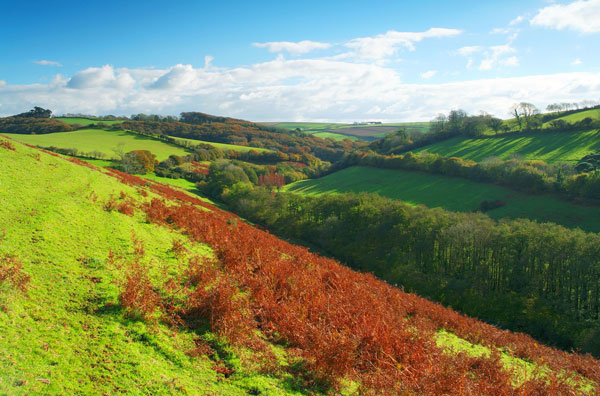
The two-acre formal gardens are laid out to lawns and flowerbeds; there is a large variety of interesting plants including many species of clematis and rose. This landscaped area exists on several levels and features four ponds stocked with many aquatic plants; the fourth pond has a small island at its centre.
The garden is bordered by a meandering stream and overlooked by a thickly wooded slope; there is circular walk around this wood from which one can catch glimpses of the house and grounds. In addition, a public footpath runs through the property and allows access out of the valley into the surrounding countryside.
Leading on from the formal area are eighty acres of pastureland and a large pond.
The mature woodlands are predominantly oak, ash and chestnut, with an understorey of hazel, holly and elder, providing nesting sites for a variety of birds including buzzards and tawny owls. In springtime there are wild orchids and carpets of bluebells. The stream and ponds provide habitats for moorhens, mallards, geese, pied and grey wagtails, kingfishers, herons, frogs, toads, newts, dragonflies and fish.
Further downstream there are boggy areas which are ablaze with yellow flag irises in the springtime; a pair of ravens can regularly be seen patrolling the valley and merlins have been spotted flying across. Around the buildings housemartins and swallows nest and woodpeckers visit the lawns. In fact, more than seventy species of birds can be observed without even leaving the valley! A complete checklist is available to visitors.
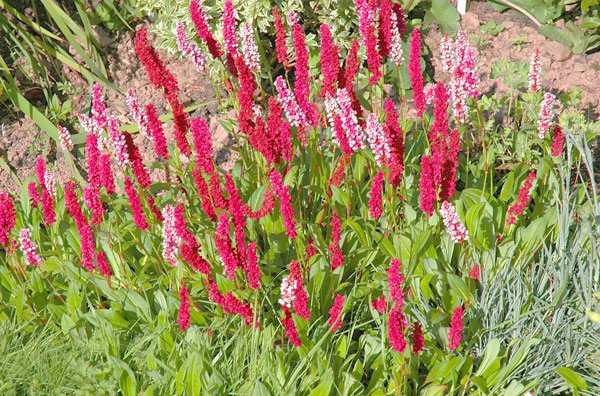
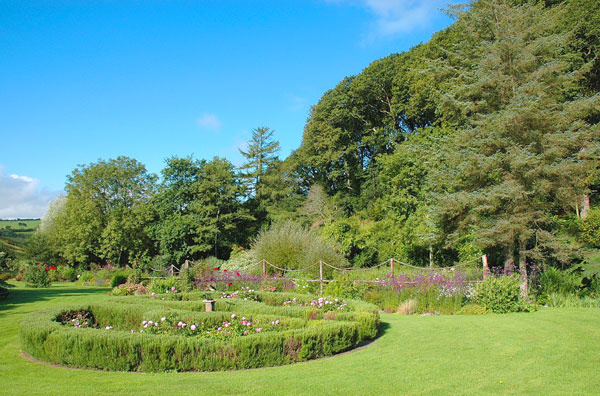
There are many fishing venues in the area that offer day tickets for coarse or game fishing, details of these can be found at Get Hooked.
Accommodation to suit can be arranged, from the Farmhouse and annexed buildings for large groups and clubs or as a family holiday together with our cottage on a self catering basis, we can arrange for you to have a truly unforgettable stay!
For further details or to make bookings please contact us.
